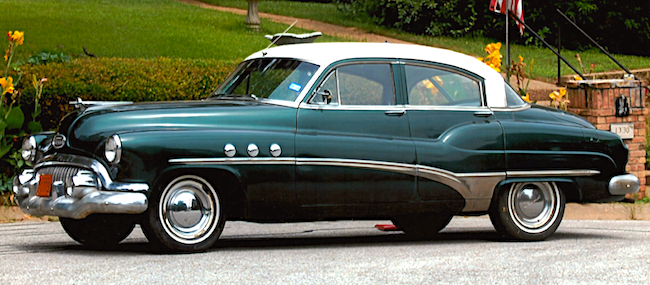One reason for this change was that by the mid-1920s cars were mechanically reliable to the point where appearance was becoming a more important sales factor. For example, General Motors' styling department was established in 1927 and its design influence increased as years went by. Then there was the Great Depression that resulted in a significant drop in sales numbers. In desperation, car makers strived to make designs seem more "modern."
Today's post features the Nash brand, a mid-market American line that survived the Depression and became the instigator of American Motors Corporation. I posted about "Nash Ambassador Sedan: Drastic Facelifts 1935-1940" here. Here I deal Nash designs leading into that period. For consistency, the top-of-the-line Ambassador model is featured, though 1935 images include the similar Advanced Eight due to a lack of available '35 Ambassador images on the Internet. Unless noted, photos are of cars listed for sale.
1933 Nash Ambassador
Nashes for 1933 were not largely different from 1920s design practice other than having more rounded shaping.
1933 Nash Ambassador
Rear quarter view of the same car. The rounding is more apparent here.
1933 Nash Ambassador - owner's photo
1934s were facelifted '33s. So use these 1933 images for comparison to the '34 photos below.
1934 Nash Ambassador
Various Internet sources state that the well-known stylist Alexis de Sakhnoffsky (1901-1964) either contributed to the 1934 Nash facelift or perhaps "influenced" the design. The illustration in the ad card shown here is either his work or was created in the spirit of his rendering style. Note how exaggerated the proportions of the car are.
1934 Nash Ambassador
Changes include a slightly sloped windshield, skirted fenders with sculpted detailing, a redesigned hood and grille, and a slightly reshaped trunk.
1934 Nash Ambassador - Hyman photo
Front quarter view. A handsome car, but not as "modern" as 1934 LaSalles and Chrysler Airflows.
1934 Nash Ambassador
Same car, rear quarter. The passenger compartment was carried over from 1933.
1935 Nash advertisement
The Nash line was redesigned for 1935, as this advertisement shows. The featured car appears to be Advanced Eight with a "beaver tail" rear. Note especially the linear sculpted decorations on the fenders and body sides. The red car at the bottom is an Ambassador Eight with its longer hood.
1935 Nash Advanced Eight - owner's photo
Or perhaps an Advanced Six. Nash's design theme was called "Aeroform" for 1935. It was indeed more streamlined than in 1934, but not in the same league as the Airflow.
1935 Nash Advanced Eight
Same car, showing the spatted rear fender and beaver tail. The latter feature meant a small trunk, so larger, bulged trunks were added in 1936
1935 Nash Ambassador - unknown image source
Side view of what might be an Ambassador Six.




















































